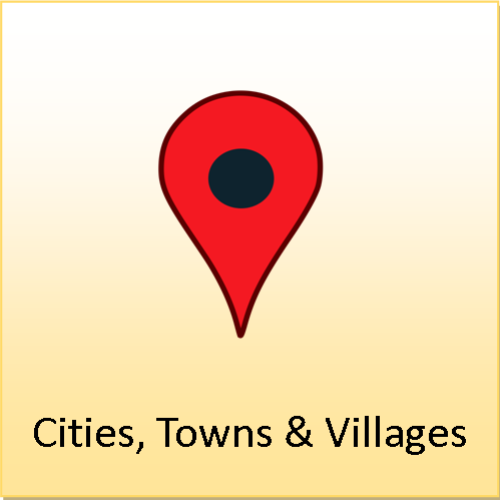About Cumbria
Country: England
Region: North West
Established: 1st April 1974
Largest City: Carlisle 108k pop
Area: 6,769 km2 (2,614 sq mi)
Population: 500,012
Admin HQ: Carlisle
Cumbria is a county in the North West of England. It came into existence as a county in 1974 after the Local Government Act 1972. The main county town is Carlisle, in the north of the county.
Cumbria is one of the most sparsely populated counties in England, with 73.4 people per km2 (190/sq mi).
It is the third largest county in England by area. It is bounded to the north-east by Northumberland, the east by County Durham, the south-east by North Yorkshire, the south by Lancashire, the west by the Irish Sea, and the north by the Scottish Borders.
Cumbria is mainly rural and has the Lake District National Park, a UNESCO World Heritage Site. A large part of the south-east of the county is within the Yorkshire Dales National Park and the east edges into the North Pennines. Much of Cumbria is mountainous and it contains every peak in England over 3,000 feet (910 m) above sea level, with the top of Scafell Pike at 3,209 feet (978 m) being the highest point in England.
Cumbria's history has many instances of invasions, migration, settlement, as well as battles and skirmishes between the English and the Scots.
The names Cumbria and Cumberland both mean "land of the Cumbrians" and are names derived from the term that had been used by the inhabitants of the area to describe themselves. In the period c.400 to c.1100, it is likely that any group of people living in Britain who identified as ‘Britons’ called themselves by a name similar to ‘Cum-ri’ which means "fellow countrymen"
The first datable record of the name as Cumberland is from an entry in the Anglo Saxon Chronicle for the year AD 945. This record refers to a kingdom known to the Anglo Saxons as Cumberland (often also known as Strathclyde) which in the 10th Century may have stretched from Loch Lomond to Leeds. The first king to be described as king of the Cumbrians is Owain ap Dyfnwal who ruled from c.915 to c.937.
During the Neolithic period Cumbria was an important area of stone axe production, which have been found across Great Britain.
The Neolithic period saw stone circles and henges built across the county. Today Cumbria has one of the largest number of preserved field monuments in England.
While not conquered during the Romans’ conquest in AD 43, most of Cumbria was conquered during a revolt deposing the Roman aligned ruler of the Brigantes in AD 69. The Romans built a number of fortifications in the area during their occupation, the most famous being UNESCO World Heritage Site Hadrian's Wall which passes through northern Cumbria.
For the rest of the first millennium, Cumbria was contested by several entities who warred over the area, including the Brythonic Celtic Kingdom of Strathclyde and the Anglian kingdom of Northumbria.
Most of modern-day Cumbria was a principality in the Kingdom of Scotland at the time of the Norman conquest of England in 1066 and thus was excluded from the Domesday Book survey of 1086. In 1092 the region was invaded by William II and incorporated into England.
The region was dominated by the many Anglo-Scottish Wars of the latter Middle Ages and early modern period and the associated Border Reivers who exploited the dynamic political situation of the region. There were at least three sieges of Carlisle fought between England and Scotland, and two further sieges during the Jacobite risings.
After the Jacobite Risings in the 18th century, Cumbria became a more stable place and the Industrial Revolution caused a large growth in population.
West coast towns Workington, Millom and Barrow-in-Furness saw large iron and steel mills develop, with Barrow also developing a significant shipbuilding industry. Kendal, Keswick and Carlisle all became mill towns, with textiles, pencils and biscuits among the products manufactured in the region.
The early 19th century saw the county gain fame when William Wordsworth and Samuel Taylor Coleridge lived and were inspired by the lakes and mountains of the region. Later, Beatrix Potter also wrote in the region and became a major landowner, granting much of her property to the National Trust on her death.
In turn, the large amount of land owned by the National Trust assisted in the formation in 1951 of the Lake District National Park, which remains the largest National Park in England.
The largest and most widespread industry in Cumbria is tourism. Even though there are less than 50,000 permanent residents in the Lake District National Park, it receives around 15.8 million visitors every year.
Over 36,000 Cumbrians are employed in the tourism industry which adds £1.1 billion a year to the county's economy.
Cumbria has the highest number of Michelin-starred restaurants, with seven in this classification in the Great Britain and Ireland Michelin Guide of 2021. Traditional Cumbrian cuisine has been influenced by the spices and molasses that were imported into Whitehaven in the 18th century. The Cumberland sausage is a well-recognised result of this. Other regional specialities include Herdwick mutton and the salt-marsh raised lamb of the Cartmel peninsula

